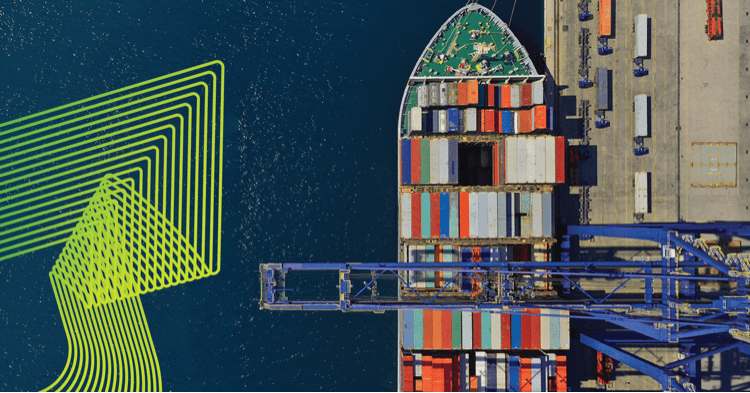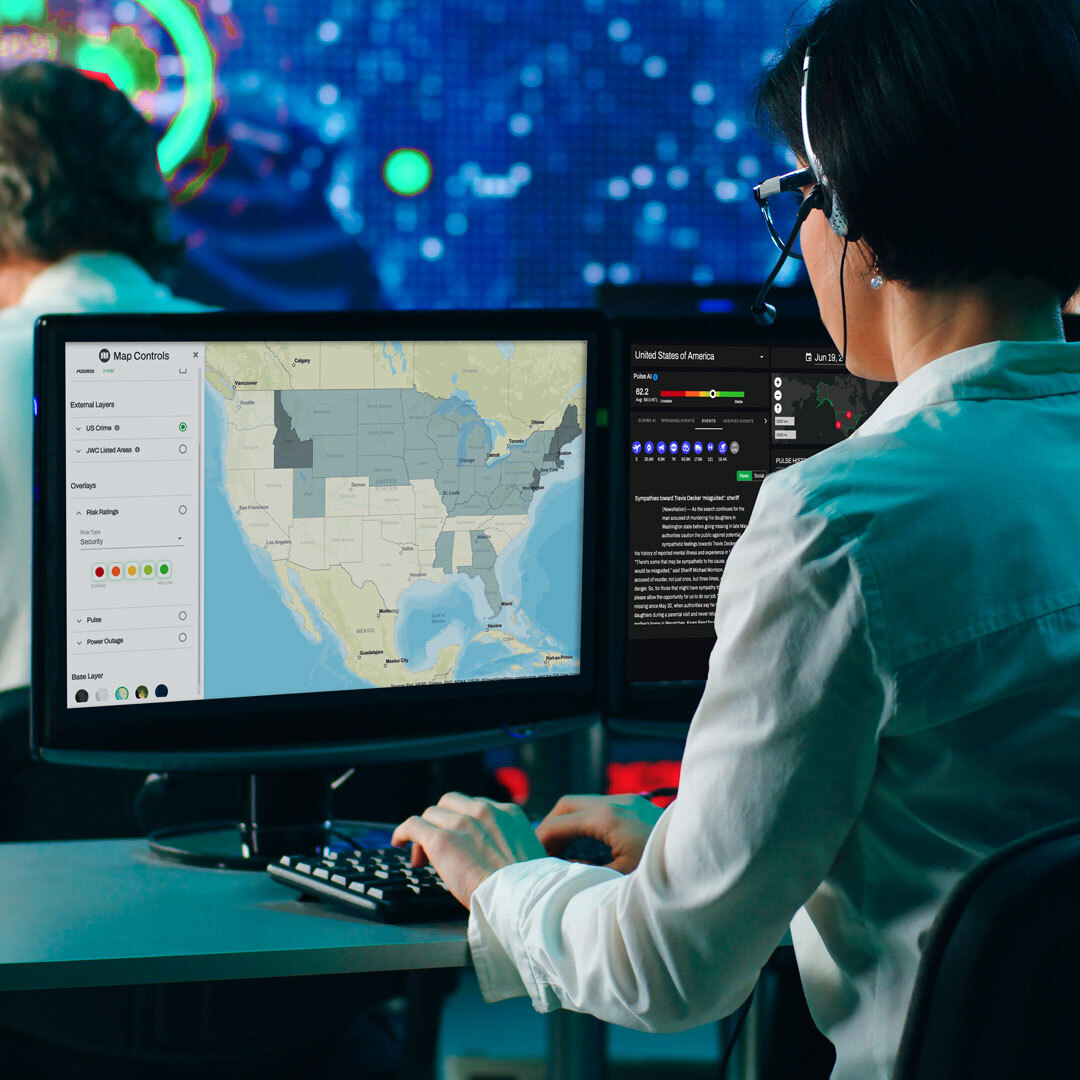From worldwide pandemics and natural disasters to the war in Ukraine and tensions around Taiwan, geopolitical tensions and more have ensured that supply chain security and resilience remain top of mind for global companies. Developing global supply chain risk management strategies to protect and monitor your full supply chain is more important than ever.
Investing in supply chains isn’t a new dynamic as organizations have seen significant transformation of the industry, from the just-in-time revolution to the impact of route optimization software. But through these transformations, the block and tackle of projecting the stability and security of these chains continues to be reliant on old-fashioned risk forecasting – predicting and reacting to uncontrollable events.
The Challenges to Developing Effective Global Supply Chain Risk Management Strategies
The costs of supply chain issues are massive. A 2021 study by the Economist Intelligence Unit found that financial costs attributed to supply chain disruptions averaged 6-10% of revenues. In addition, the risks to brands and reputations are significantly greater and more impactful, emphasizing the importance of having global supply chain risk management strategies and plans in place. While we are seeing a shift back to the localization of supply chains, the reality is that these investments do not shift on a dime, and the more prepared you can be to navigate or prevent external shocks, the more effective your response.
So, what are the three critical parts to a supply chain risk monitoring program?
Focusing specifically on the operating environment of your supply chain, there are three critical components to include in a monitoring program:
- Impacts to your physical supply chain – Monitoring disruptions and events impacting your physical supply chain, which includes transportation infrastructure like roads or railroads, shipping routes, distribution centers, or airports, is imperative. The technologies you utilize need to be as granular and as timely as possible to help you understand both the immediate and longer-term implications of disruption.
- Impacts to your operating environment – Remaining on top of, and hopefully in front of, challenges that impact the operating environment, from regulatory settings and political changes, to investments in infrastructure and labor shortages, is equally important. The countries you do business in have a critical impact on the resiliency of your infrastructure. Understanding how these factors may or may not change and their implications on the security and expediency of your operations in critical for increasing supply chain resiliency.
- Impacts to your brand – Securing a successful supply chain isn’t just about the physical and political environment. Monitoring for impacts on your brand from a reputational standpoint is also key. Increased awareness of ESG (Environmental, Social and Governance) issues puts the onus on you to ensure your third parties, as well as the operating environments you choose to be in, don’t just do well for your bottom line, but they also pass the expectations that regulators, shareholders, and your own people place on you.
According to the same EIU study in 2021, only 25% of respondents invested in predictive analytics to forecast disruptions. Why is this? At the heart of this statistic, it’s likely because geopolitical and security monitoring technologies often sit within siloed budgets with compartmentalized information and a real lack of connection back to the workflows required for effective global supply chain risk management strategies.
Weather data is shared, but what about political risks tied to elections at state or local levels? What about the impact of geopolitical issues such as the Russia/Ukraine conflict on not just energy supplies but the infrastructure within the country to continue moving goods?
The reality is that these issues can have significant ramifications across all areas of an organization and require both technology and humans to properly mitigate and solve the problems they cause.
The Opportunities
If your organization isn’t using predictive analytics to help protect your supply chain, the time to start is now. These are the five steps you need to take:
- Find the spend, and make it a team approach: Most multinational corporations have spend for geopolitical and security related monitoring technologies. Go hunting! Whether it’s the security team, the intelligence/fusion function or sitting with the strategy and M&A team, there is likely a license you can be tapped into or expand.
- But make sure it’s the right technology(ies): Ensure that you’re not just getting a media aggregation tool. Real-time intelligence matters, but if they’re not collecting from the geographies you care about (not everyone Tweets) or bringing in the verified sources that you can rely on to make decisions, then your productivity gains have now been dramatically reduced.
- Work with someone who has been there and done that: Ensure that the technology you’re procuring is built by people who understand your world. From collections capabilities to finding the right sources, through to the analyst horsepower and operational credentials to help you make sense of what’s happening. It is critical to increase the relevancy of the intelligence and tools at your disposal and how they’re set up for you.
- Make it your own: Choose technologies that can be customized to your own operating realities. From search functions to alerting tripwires that are set to your assets, it’s critical that you’re utilizing technologies that support or adapt to your organizational workflows. You should also consider solutions that integrate with your own applications, to further enhance efficiencies.
- Decision intelligence: Having accurate and timely data is important. But great decision making relies on more than real-time intelligence. If leaders also have historical context or trends data, which provide insight on whether a disruption is an outlier, one-off occurrence or an indicator of something longer-term, they are better armed to make strategic decisions. Maybe even more importantly, strategic decisions based on forecasted information empower organizations to potentially avoid problems before they impact the supply chain.
How to Make Predictive Analytics a Reality
With the globalization of supply chains, it is so important that organizations are forecasting global risk and stability in order to increase and improve threat mitigation. Providing curated next-to-real-time data on disasters, key weather events, power outages, cyber attacks, and overall sentiment can provide insight globally to help your supply chain operate as planned and keep your organization’s reputation intact – despite disruptions and geopolitical events.
If your organization already has the right tools in place to alert leaders to impending issues and forecast potential disruptions, then you are setting your supply chain up to succeed despite potential challenges. But if your risk and threat intelligence provider isn’t delivering what your organization needs to keep its supply chain operating smoothly, it might be time to investigate other options.
Seerist Can Help
Seerist’s augmented analytics solution combines AI, machine learning, and expert human analysis to deliver trustworthy threat intelligence. By automating the collection of global data, capturing various shifts and swings, and filtering out the noise, Seerist provides valuable insights. These insights are seamlessly integrated into a user-friendly dashboard, ensuring swift and dependable decision-making in crucial moments.
Book a demo to see Seerist’s threat intelligence tools in action or follow us on LinkedIn to learn more about how Seerist helps you stay ahead of the curve.






